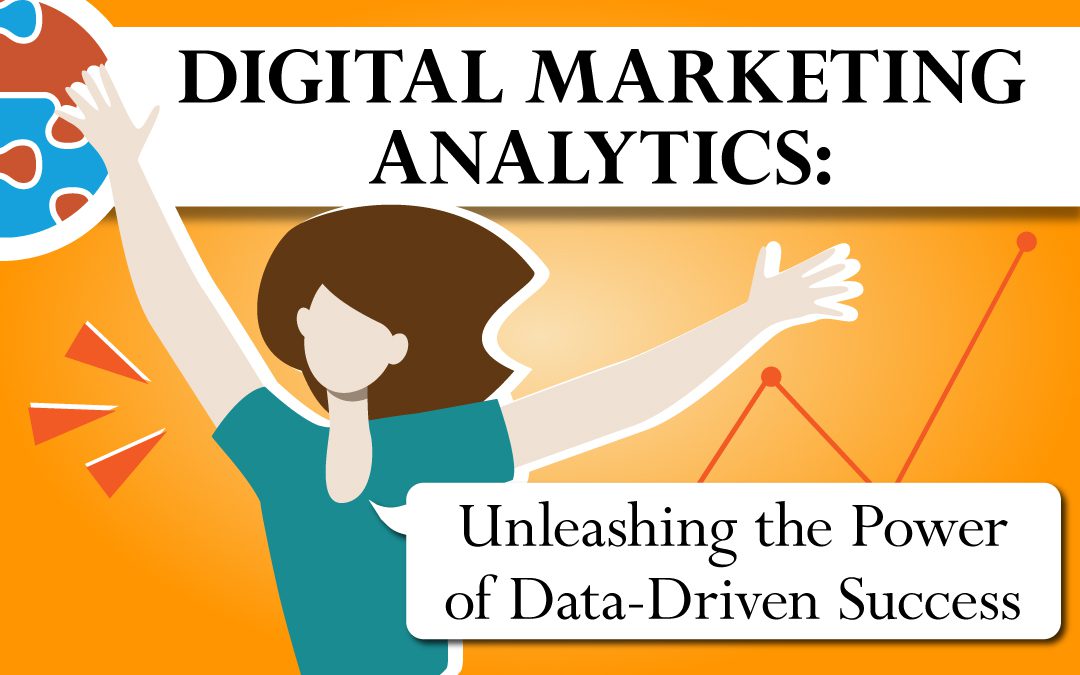Data-driven analytics in digital marketing involves using quantitative data to make informed decisions and drive marketing strategies. In today’s hypercompetitive digital landscape, businesses are increasingly leveraging data-driven analytics to gain a competitive edge and enhance their marketing efforts.
By analyzing a variety of quantitative data points such as website traffic, user engagement, and conversion rates, marketers can gain valuable insights into consumer behavior and preferences. This allows them to fine-tune their marketing campaigns, craft personalized messaging, and optimize their advertising spend for maximum impact.
Additionally, data-driven analytics enables marketers to measure the effectiveness of their campaigns in real-time, allowing for agile adjustments and continuous improvement. We’ll explore the critical role of data-driven analytics in digital marketing and its impact on shaping successful marketing strategies.

Credit: problemsolversconsultants.com
Understanding Data-driven Analytics
Definition Of Data-driven Analytics
Data-driven analytics refers to the process of analyzing, interpreting, and using data to support decision-making in digital marketing. It involves employing statistical methods, algorithms, and data mining techniques to derive insights and make informed strategic choices.
Types Of Data Used In Data-driven Analytics
There are various types of data essential for data-driven analytics in digital marketing:
- Customer demographics and behavior
- Website traffic and user interactions
- Customer relationship management (CRM) data
- Social media engagement metrics
- Consumer purchase history

Credit: alfapeople.com
Benefits Of Data-driven Analytics In Digital Marketing
The utilization of data-driven analytics in digital marketing offers a myriad of benefits that have revolutionized the way businesses interact with their target audience and make strategic decisions. By harnessing the power of data, marketers can gain valuable insights into consumer behavior, preferences, and trends, allowing them to optimize their marketing efforts for enhanced performance and ROI.
Improved Decision-making
Data-driven analytics empowers marketers to make informed decisions based on concrete data and insights rather than relying on guesswork or assumptions. By analyzing detailed metrics and performance indicators, marketers can identify successful strategies, trends, and areas for improvement, enabling them to allocate resources effectively and drive better results.
Better Targeting And Personalization
With a deep understanding of consumer behavior and preferences derived from data-driven analytics, marketers can tailor their campaigns to specific audience segments, ensuring relevant and personalized messaging. This level of targeting not only enhances the effectiveness of marketing efforts but also fosters stronger connections with consumers, leading to higher engagement and conversion rates.
Enhanced Customer Experience
By leveraging data-driven analytics, marketers can optimize the customer experience across various touchpoints, ensuring seamless interactions and personalized engagements. Understanding consumer preferences and behavior enables businesses to deliver relevant content, product recommendations, and personalized offers, ultimately creating a more satisfying and tailored experience for each individual customer.
Implementing Data-driven Analytics In Digital Marketing
Discover the power of data-driven analytics in digital marketing for more effective strategies and better results. Uncover valuable insights, optimize campaigns, and make informed decisions based on real-time data to maximize your online presence.
Implementing Data-Driven Analytics in Digital Marketing Implementing data-driven analytics in digital marketing is crucial for businesses to understand their target audience, measure campaign success, and make informed marketing decisions. By collecting, organizing, and analyzing data, marketers can gain valuable insights and optimize their strategies to drive better results. In this section, we will explore the key steps involved in implementing data-driven analytics in digital marketing, including collecting and organizing data, using analytics tools and platforms, and interpreting and analyzing data.
Collecting And Organizing Data
Collecting and organizing data forms the foundation of data-driven analytics in digital marketing. Marketers need to gather relevant data from various sources, such as website analytics, social media platforms, and customer databases. This data can include metrics like website traffic, click-through rates, conversion rates, and customer demographics. Organizing the data in a structured manner is important to ensure easy accessibility and efficient analysis. Creating a data management system or using spreadsheets can streamline the process and make it easier to spot patterns and trends.
Using Analytics Tools And Platforms
To make the most of the collected data, marketers need to utilize analytics tools and platforms. These tools provide advanced features to track, measure, and analyze data across different marketing channels. Popular analytics tools like Google Analytics enable marketers to monitor website performance, track user behavior, and generate comprehensive reports. Additionally, social media platforms offer their analytics tools, providing insights into audience engagement and campaign reach. By leveraging the power of analytics tools, marketers can gain a deeper understanding of their audience’s preferences and behaviors, leading to more targeted and personalized marketing efforts.
Interpreting And Analyzing Data
Once the data is collected and organized, marketers need to interpret and analyze it effectively. This involves identifying patterns, trends, and correlations within the data to uncover actionable insights. By examining data segments and comparing different metrics, marketers can discover the most effective marketing channels, campaign strategies, and audience segments. Data visualization techniques, such as charts, graphs, and tables, can help present the findings in a visually compelling manner. With a thorough analysis of the data, marketers can make data-driven decisions, optimize their marketing campaigns, and achieve better results. In conclusion, implementing data-driven analytics in digital marketing is essential for businesses to stay competitive and make well-informed marketing decisions. By collecting and organizing data, using analytics tools and platforms, and interpreting and analyzing the data, marketers can gain valuable insights to optimize their strategies and achieve better marketing performance. The next section will delve deeper into the benefits of data-driven analytics in digital marketing.
Case Studies: Successful Applications Of Data-driven Analytics
In the world of digital marketing, data-driven analytics plays a pivotal role in helping businesses make informed decisions and achieve impressive results. By analyzing vast amounts of data, marketers gain invaluable insights that enable them to optimize their strategies and deliver impactful campaigns. In this section, we’ll explore two compelling case studies that demonstrate the power of data-driven analytics in driving success.
Case Study 1: Boosting Roi Through Data-driven Insights
In this case study, Company X, a leading e-commerce retailer, implemented a data-driven analytics approach to improve their return on investment (ROI) considerably. By harnessing the power of data, they obtained valuable insights into customer behaviors, preferences, and purchase patterns.
Their analytics team closely examined website traffic, conversion rates, and customer demographics to identify areas of improvement. Through the analysis, they discovered that the highest conversion rates occurred during specific days and hours. Armed with this information, Company X optimized their promotional campaigns to coincide with these peak periods, resulting in a significant boost in sales.
Additionally, the data-driven insights allowed Company X to identify underperforming product categories and pinpoint the reasons behind the lackluster sales. By improving product descriptions, updating images, and refining their targeting strategies, they achieved a remarkable increase in customer engagement and sales conversions, leading to an impressive uplift in ROI.
Case Study 2: Leveraging Data For Effective Ad Campaigns
In this case study, Company Y, a global advertising agency, utilized data-driven analytics to create successful ad campaigns for their clients. By harnessing the power of data, they gained a deep understanding of their target audience’s preferences, interests, and online behavior.
Through automated data collection and analysis, Company Y identified specific customer segments and developed highly targeted ad campaigns tailored to each audience. They analyzed click-through rates, engagement metrics, and conversion rates to refine their strategies further and optimize campaign performance.
Moreover, Company Y utilized real-time data to make immediate adjustments during the campaign run. By constantly monitoring performance and making data-driven optimizations, they ensured that their clients’ ads were highly effective in reaching the right audience, resulting in increased brand visibility, website traffic, and conversions.
Through these two compelling case studies, we see how data-driven analytics plays a crucial role in boosting ROI and maximizing the effectiveness of ad campaigns. With the ability to access and analyze vast amounts of data, businesses can make data-informed decisions, refine their strategies, and drive remarkable results in the ever-evolving world of digital marketing.

Credit: www.linkedin.com
Frequently Asked Questions Of Data-driven Analytics In Digital Marketing
What Is The Data-driven Approach In Digital Marketing?
The data-driven approach in digital marketing utilizes insights and analytics to guide decision-making and strategies. It involves collecting and analyzing data from various sources to understand consumer behavior, preferences, and trends. This approach helps marketers to optimize campaigns, target the right audience, measure performance, and make informed decisions for achieving better results.
What Is Data Analytics In Digital Marketing?
Data analytics in digital marketing involves analyzing data to gain insights into consumer behavior, trends, and campaign performance. It helps optimize strategies and make data-driven decisions to improve marketing efforts.
What Is Data-driven Analytics?
Data-driven analytics is the process of analyzing data to make informed decisions. It uses statistical methods and technologies to uncover insights and trends. This approach enables businesses to optimize strategies and improve performance.
How Does Data Analytics Drive Digital Marketing Decision-making And Optimization?
Data analytics drives digital marketing decision-making and optimization by providing valuable insights and patterns from vast amounts of data. This helps marketers identify trends, consumer behavior, and campaign performance, enabling them to make data-driven decisions, target the right audience, refine strategies, and optimize campaigns for better results.
Conclusion
Data-driven analytics in digital marketing is a game-changer. By harnessing the power of data, marketers can make informed decisions, personalize content, and optimize campaigns. With the ability to track and measure performance, businesses can identify opportunities for growth and allocate resources effectively.
In the dynamic landscape of digital marketing, leveraging data-driven insights is essential for staying competitive. By embracing data-driven analytics, businesses can unlock new levels of success and drive meaningful results in today’s digital world.







